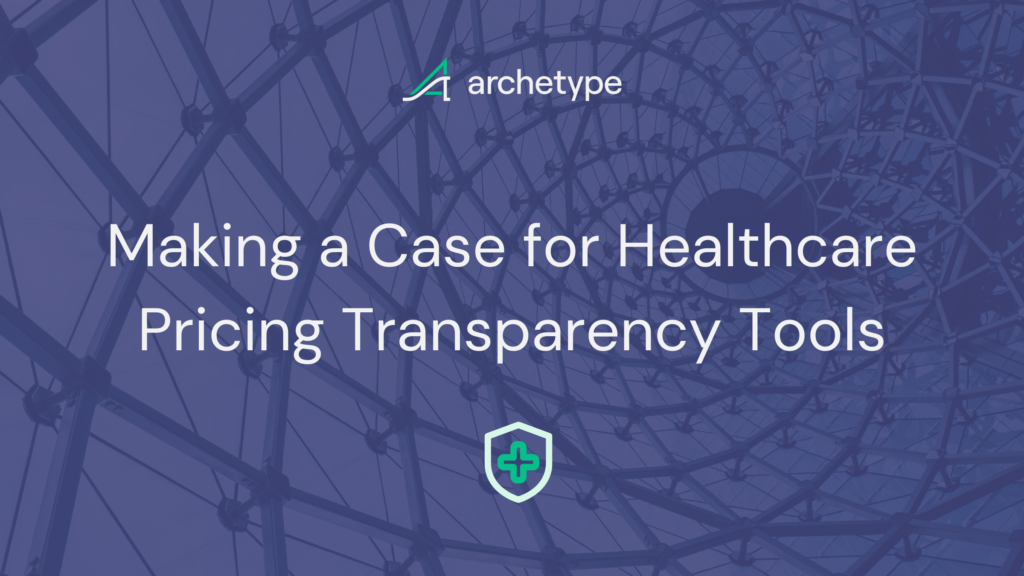Making a Case for Healthcare Pricing Transparency Tools
It’s Not Just About Compliance – It’s Good Business
By: Kate Purschke and Shahrukh Tarapore
Hospitals and health plans are no strangers to federal rules and regulations — and the penalties for delayed compliance.
In June 2022, two Georgia hospitals were fined more than $1 million for noncompliance with the Centers for Medicare and Medicaid Services (CMS) hospital price transparency rule. But they aren’t alone in their overdue response to the CMS price transparency requirements.
What Is Healthcare Pricing Transparency?
Simply put, healthcare price transparency is the act of making hospital pricing and the cost of medical services readily available to consumers. It allows consumers to “shop around” like they would for other services they value. Price transparency can also work in a hospital’s financial favor — opening their eyes to competitor pricing, which they can use to adjust rates and improve market share.
According to a February 2022 report by Patient Rights Advocate, only 14% of hospitals had fully complied with the pricing transparency rule a full year after the deadline.
With the risk of $300 per-day penalties, why do many hospitals remain out of compliance?
Confusion and lack of urgency likely play a role in the slow responsiveness. For some hospitals, $300 per day sounds much more cost-effective than the $5.3 million CMS estimated it would take to build a price transparency tool from the ground up.
The argument could be made that acting fast to deliver price transparency is a good business practice that will benefit the bottom line, bring added value to consumers, and set hospitals apart from their competitors.
Understanding CMS Price Transparency Requirements
CMS hospital price transparency requirements went into effect on Jan. 1, 2021. The rule, as described on their program overview page, requires that hospitals post standard charges in two ways — a machine-readable file and a consumer-friendly display.
Machine-readable files should include:
- Gross charges
- Discounted cash prices
- Payer-specific negotiated charges
- De-identified minimum and maximum negotiated charges
Consumer-friendly displays must include plain language descriptions of at least 300 services (fewer if the hospital doesn’t provide that many), along with discounted cash prices specific to each payer.
Hospitals weren’t the only target of price transparency legislation. Health plans are also required to meet certain price transparency milestones — though they have a bit longer to hit their goals. Requirements for health plans are divided into three phases, with staged deadlines into 2024.
According to CMS, health plans must reach price transparency in phase one by producing machine-readable files for in-network rates and allowed amounts. Phases two and three require internet-based price comparison tools that consumers can use to get estimates of cost-sharing responsibility for specific services from specified providers.
The Benefits of Price Transparency in Healthcare
Price transparency data and tools — like a hospital price list or a surgery cost estimator — can help hospitals and health plans compete in the healthcare market. That’s because these organizations can position price transparency solutions as a benefit to consumers in their marketing efforts.
Specifically, hospitals and health plans can highlight their efforts to be more transparent, which drives improved patient satisfaction, higher patient engagement, and increased trust.
A 2020 consumer sentiment survey by HealthSparq found that 79% of consumers who have used transparency tools believe they help with decision-making. And 59% said personalization of these tools would build even more trust.
Turning Price Transparency from Burden into Business
Hospitals and health plans should turn to in-house talent, consultants, or strategic partners to ensure they meet minimum price transparency requirements. But they shouldn’t stop there.
These organizations need to consider how they can leverage price transparency investments in the future.
Here’s what will take hospitals and health plans a step further:
- Understand the market. Research how they compare to competitors and let that data inform pricing decisions. Make pricing adjustments quickly using price transparency solutions.
- Prioritize consumer engagement. Engage consumers across a variety of platforms using all modes available.
- Keep the consumer top of mind in decision-making. Don’t invest in price transparency tech for the sake of having it. Instead, consider consumer wants and needs and build an experience to match that — one that can evolve and change.
Now’s the Time to Deliver on Price Transparency
Research shows consumers value price transparency. A study by Accenture Consulting found that 91% of consumers want to know healthcare costs before getting care, and 46% say they use healthcare pricing information when planning their budgets.
Timely compliance with federal regulations can help set hospitals and health plans apart from their competitors.
Contact the Archetype consulting team to learn more about how you can leverage healthcare price transparency to improve your bottom line.
